US politics: What do all the words mean?
- Published
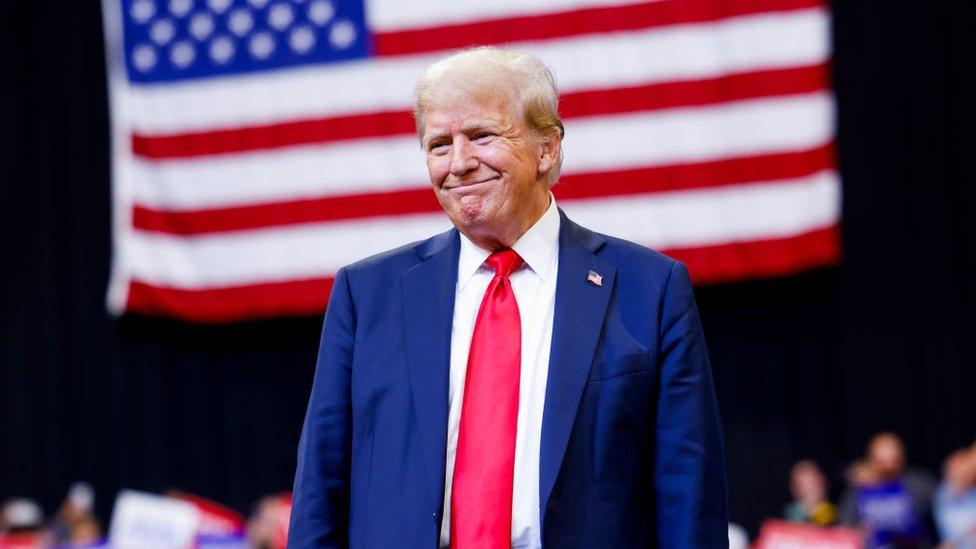
Donald Trump was previously US president between 2017 and 2021
On 5 November 2024, millions of Americans voted Donald Trump as their next president and on 20 January 2025 he will take over in that job again.
But the process is different to how it happens in the UK and there are a lot of complicated words and names being used.
Check out Newsround's US politics dictionary below to find out what they all mean.
Campaign
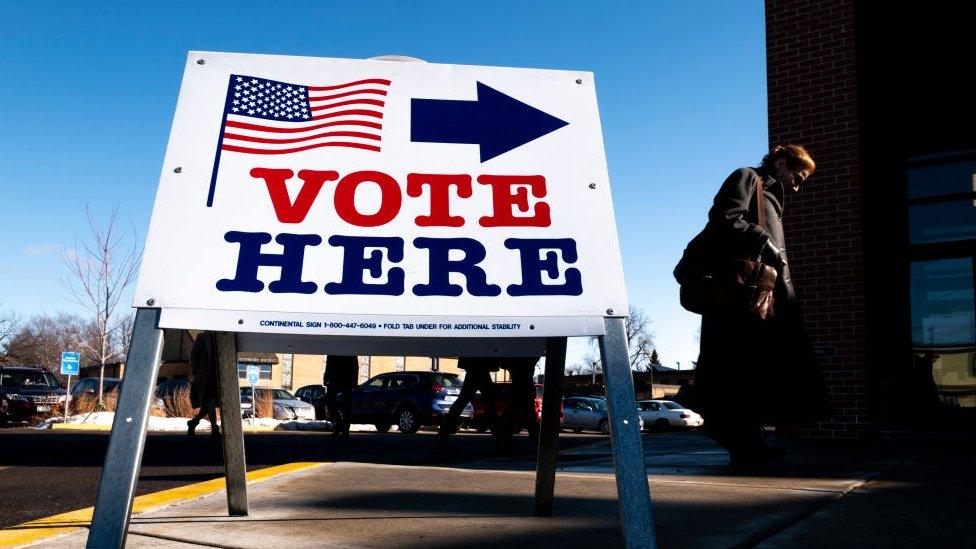
Americans voted for their next president on 5 November 2024
When people in the same political party go around the country and try to persuade people to vote for them, this is called campaigning. People who want to become president spend a lot of money doing this.
Kamala Harris and Donald Trump campaigned for many months to persuade people around the US that they should be the next president.
During this time politicians make lots of promises they're expected to keep if they win.
Capitol
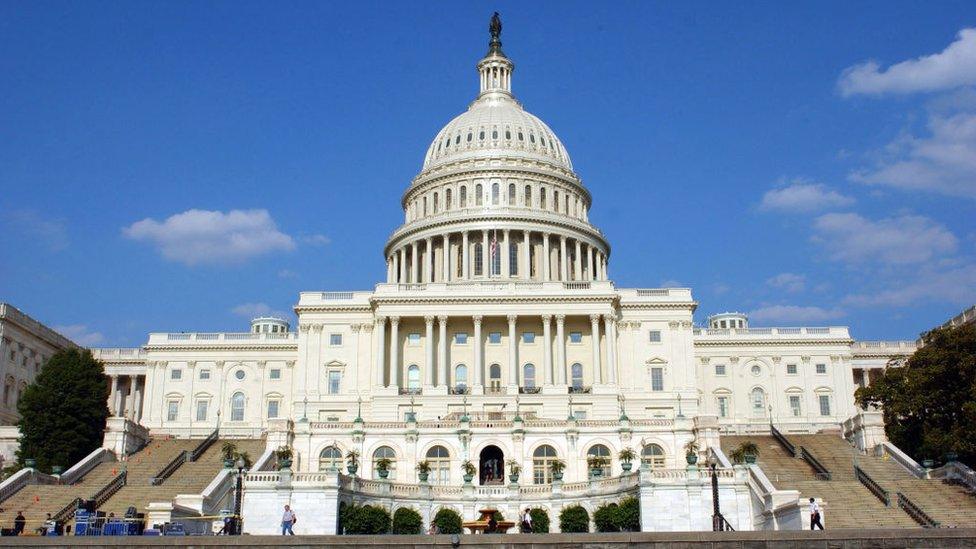
The US Capitol building is located in Washington DC
This is a building in Washington DC where part of the US government works, called Congress.
Congress is made up of two parts that you will find in the Capitol building - the Senate and House of Representatives.
Traditionally, the inauguration ceremony which marks the moment that the president officially starts his or her new job takes place on the steps of this building, in January following the election.
Commander-in-chief
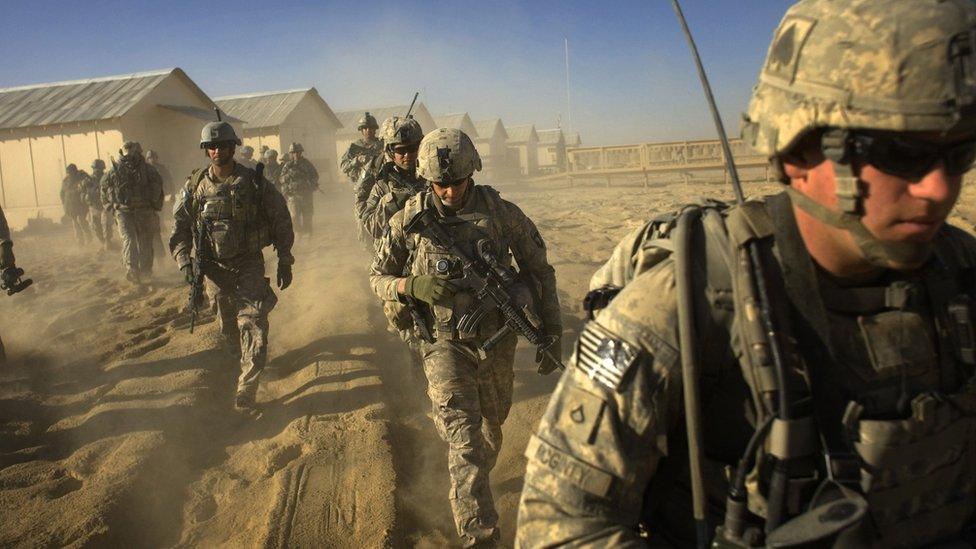
The US president is automatically made head of the US army
This is a job which the president automatically gets. It
means he or she is head of all the armed forces of the United States, including the army, navy and air force.
Congress
This is the part of the US government that writes and brings in laws, and also approves how much money the country spends.
It is made up of two parts - the House of Representatives (435 people) and the Senate (100 people). It's home is the Capitol building.
Constitution
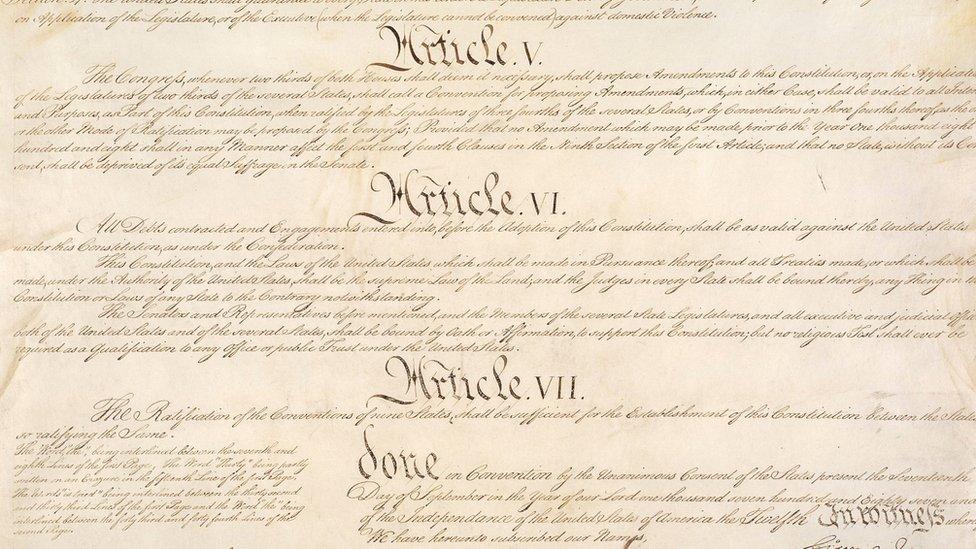
Part of a signed copy of the Constitution of the United States from 1787
This is the rulebook that everyone in America has to follow.
It was first made official towards the end of the 18th Century and most recently tweaked in 1992.
Democratic party
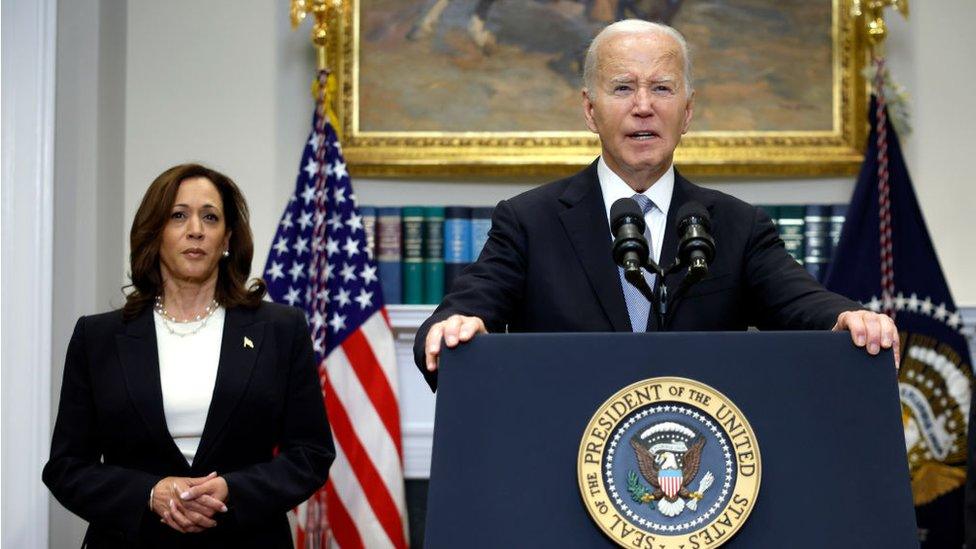
Current US president Joe Biden and vice-president Kamala Harris are both Democrats
One of the two main political parties in the US.
President Joe Biden is from the Democratic Party and Kamala Harris represented the Democrats in 2024 in her battle to become the next president.
House of Representatives
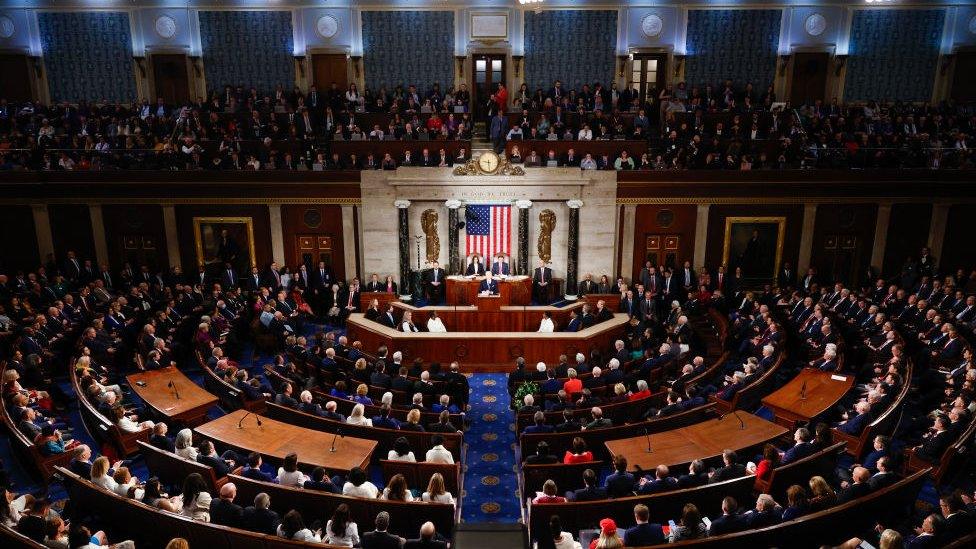
The House of Representatives is one the two houses of the US Congress
The House of Representatives is one part of the US government that makes the laws, called Congress. The other part of Congress is the Senate.
There are 435 people in the House of Representatives (and 100 in the Senate).
Elections for the House of Representatives are held in states every two years. The number of representatives that each state has in Congress depends on how big it is.
Inauguration
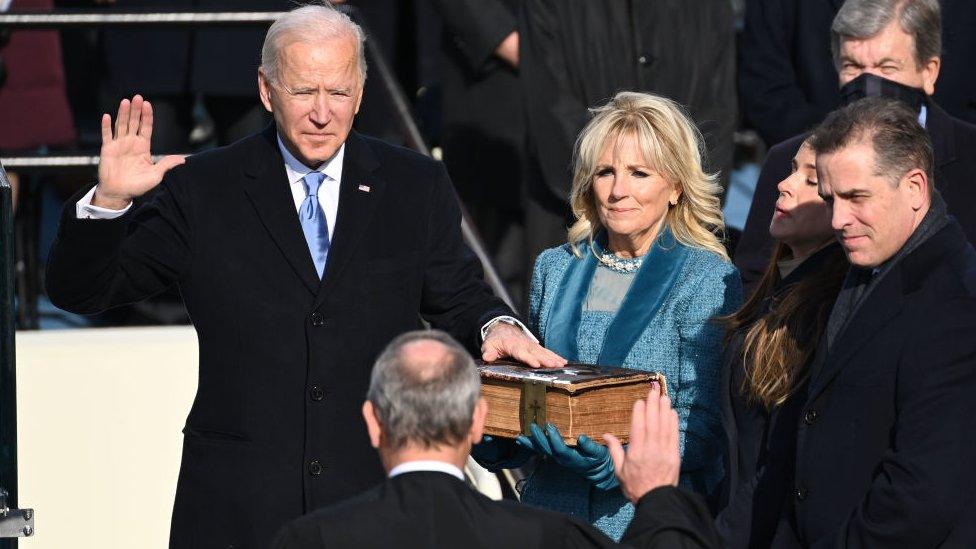
President Joe Biden and his family at his inauguration ceremony at the Capitol building on 20 January 2021
This is the name given to the ceremony which officially marks the start of the president's time in the job and the day when the president and his team move into the White House.
It takes place on 20 January following the election.
Inaugural Address
After taking the oath, the president delivers an inaugural address, which is a speech outlining their vision, goals, and priorities for the nation. This speech is often used to unite the country and set the tone for the coming term.
Oath of Office
The newly elected president takes the oath of office. This is the moment of the inauguration, where the president pledges to "preserve, protect, and defend" the Constitution of the United States.
Party
A group of people with similar political views who come together to create one group, which is known as a political party.
The group generally has the same hopes and goals for how the country should be run.
There are two main parties in the US - the Republican party and the Democratic party.
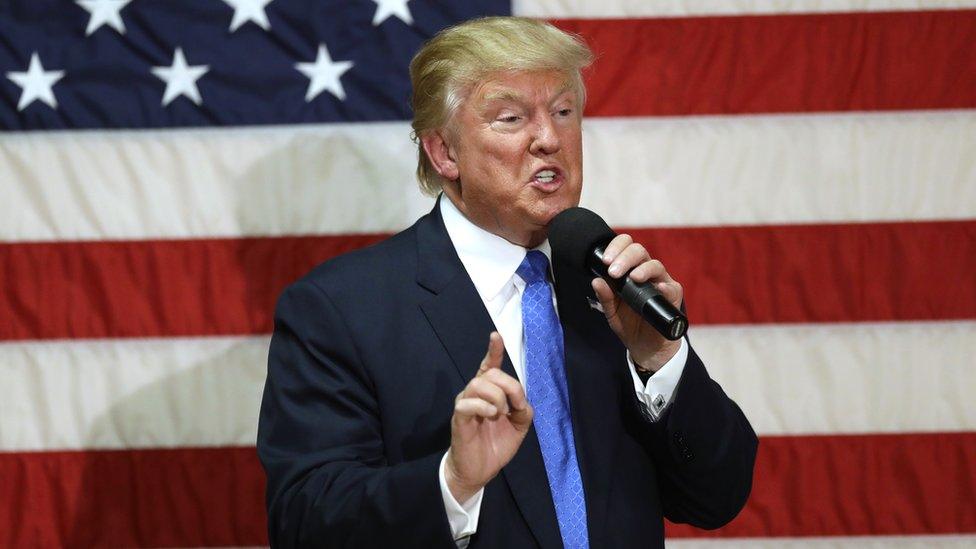
Donald Trump is a member of the Republican party
President
The president of the US is the leader of the country and perhaps the most powerful person on the planet.
We do not have a president in the UK because we are ruled by a different system, which means we have a King who is the head of our country, with the prime minister in charge of our government.
Republican party
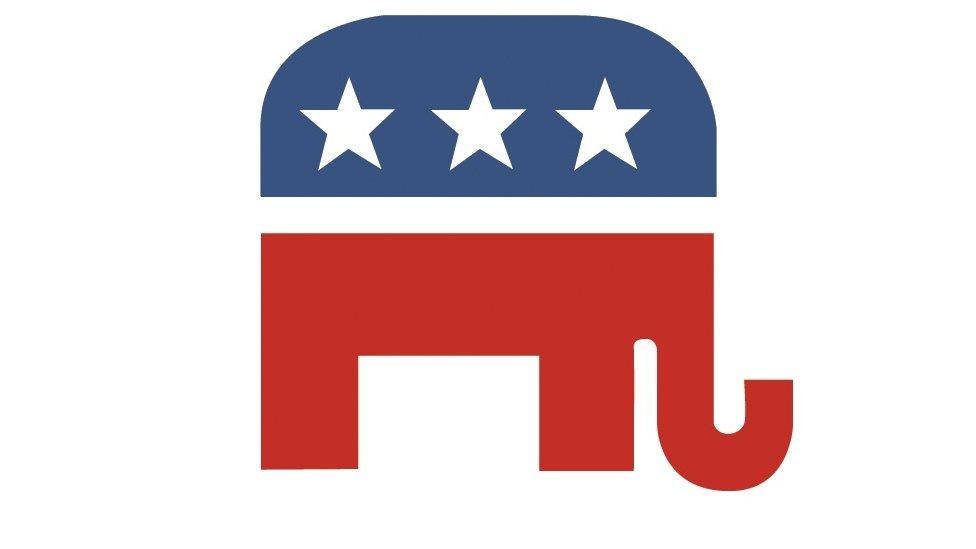
An elephant has come to be a symbol of the Republican party in the US
One of the two main political parties in the US.
Donald Trump represented the Republicans in his successful battle to become president.
Senate
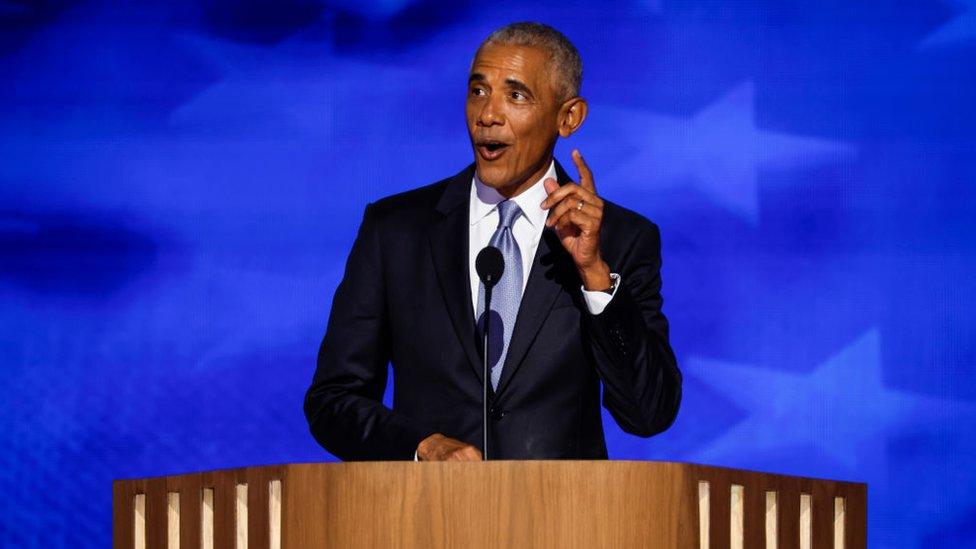
Former US president Barack Obama was a member of the Senate before he came president
The Senate is one part of the US government that makes the laws, called Congress.
The other part of Congress is the House of Representatives.
The Senate has 100 members - two from each state. One is senior and one is junior, depending on the experience they have.
A member of the Senate is called a Senator and they stay in their job for six years.
State
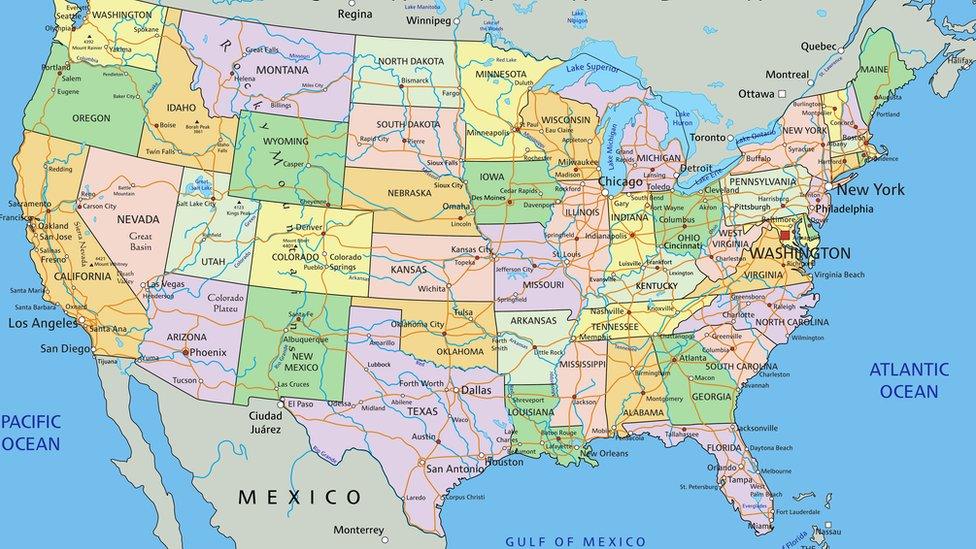
The US is divided up into 50 smaller areas, called states
The US is divided up into different areas called states.
There are 50 states in total, which come together to form the United States of America.
Each state has its own rules on some things, while others are decided by the law of the whole of the US, which everyone must follow. This is what is called a federal system.
People in each state vote for their own governor, who stays in the job for four years.
Each state also chooses politicians who will work in Congress.
Swing state
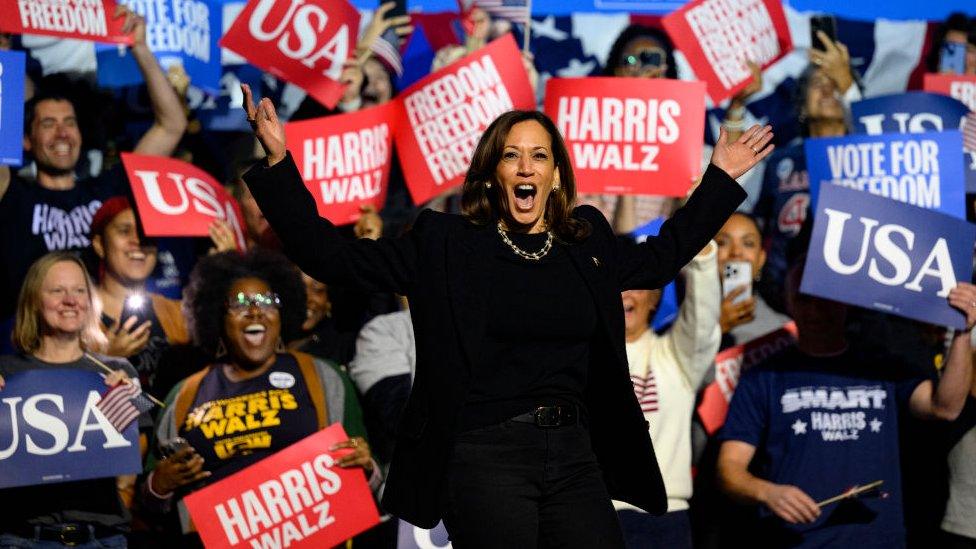
Kamala Harris campaigned in the swing state of Pennsylvania before the 2024 election
This is a state which often changes the party it supports from election to election.
This is why they are so important to people who want to be president, as they are open to be persuaded!
Swing states include Arizona, Georgia, Michigan, Nevada, North Carolina, Pennsylvania and Wisconsin. It might also be called a battleground state or a purple state.
In 2024 all the swing states voted for Donald Trump.
Term
For the president, the term is the name given to the length of time they can stay in the job before the American people can choose someone new. A president's term is four years long.
A president is only allowed to stand for two terms - that is, eight years - before they have to step down and let someone else take over.
The two terms don't have to run one after the other: Donald Trump's first term ran from 2017-2021 and his second will run from 2025-2029.
Vice-president
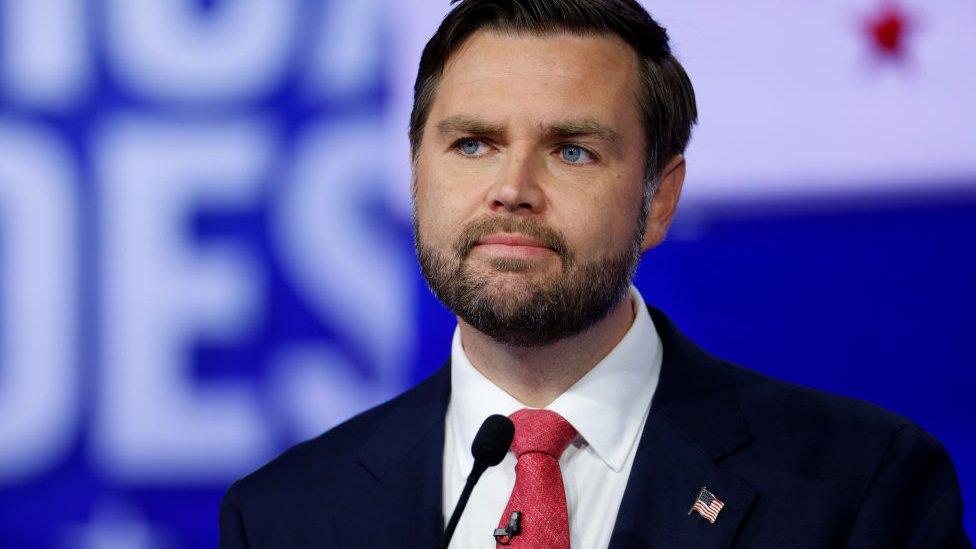
JD Vance will become the next vice-president of the United States
The person who is second to the president. They oversee the Senate and also would become the president automatically if the current president could no longer continue.
They are also very close to the president so are seen as a close advisor.
White House
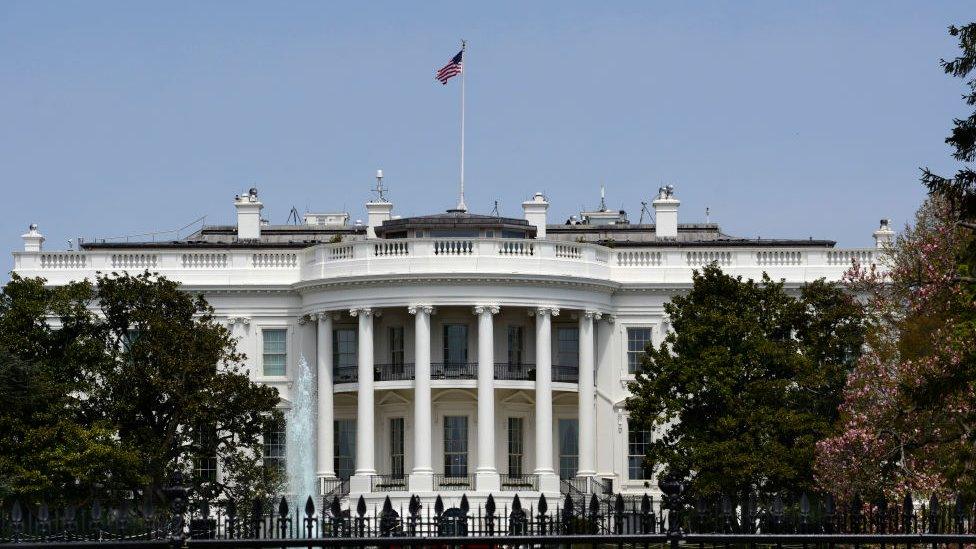
The White House is located in Washington DC
The White House is where the president of the United States lives and works.
The first US president, George Washington, selected the site for the White House and construction began in 1792.
Since 1800, every US president has lived in the building, which is located in the country's capital, Washington DC.
- Published6 July 2020
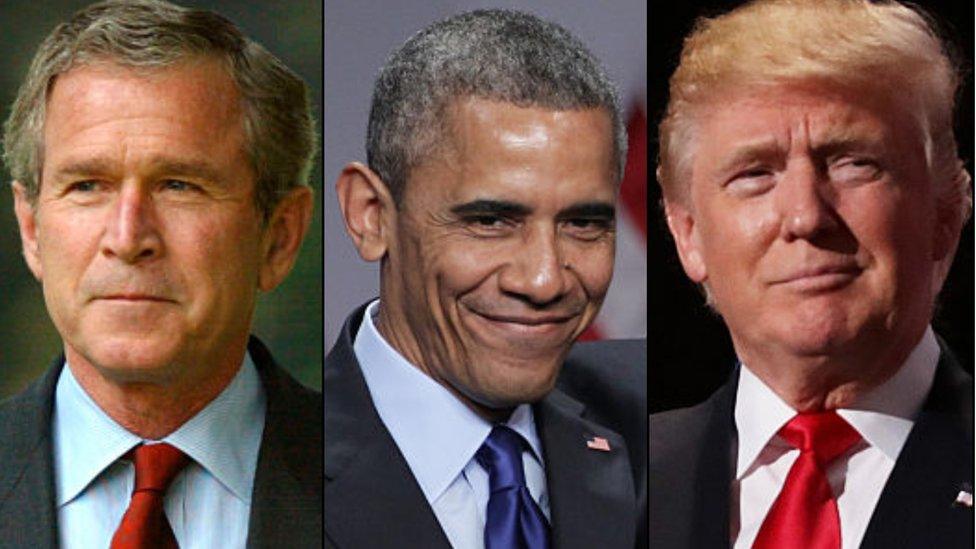
- Published3 June 2019
